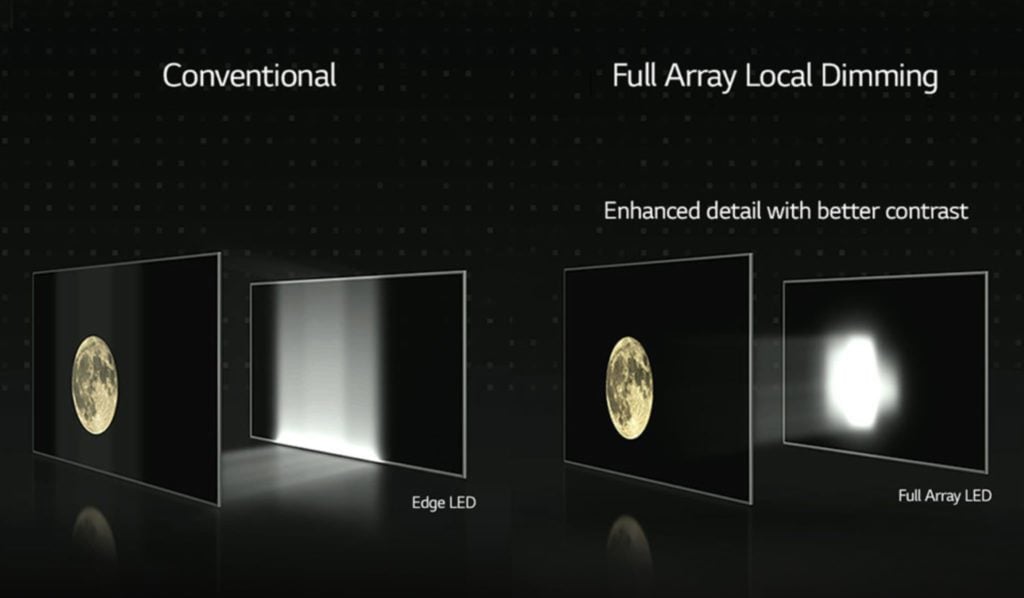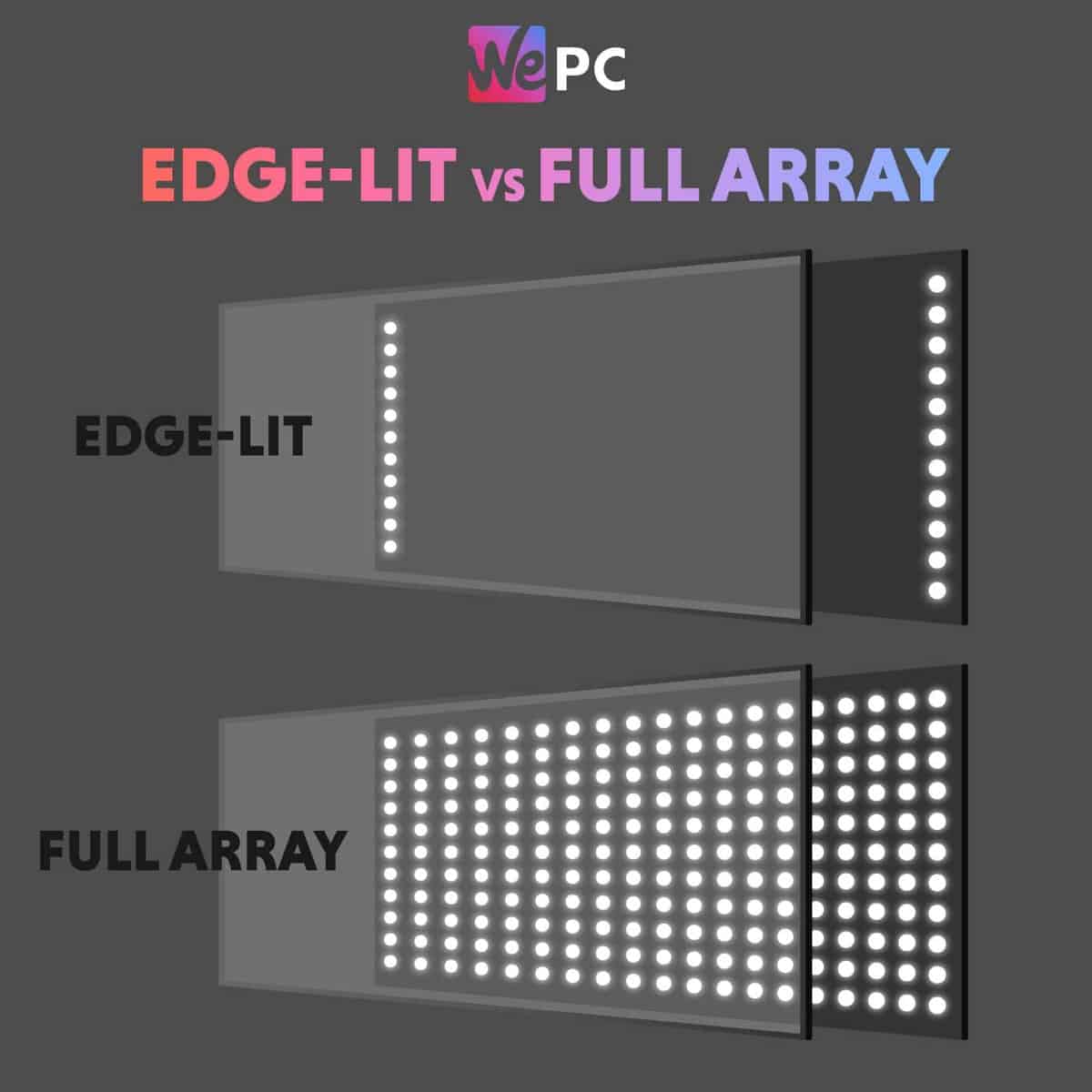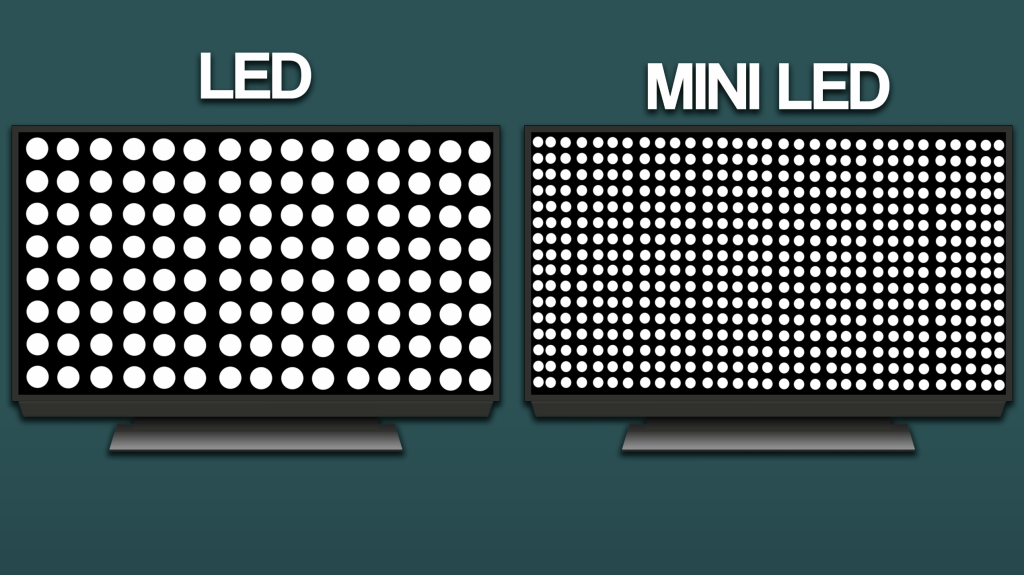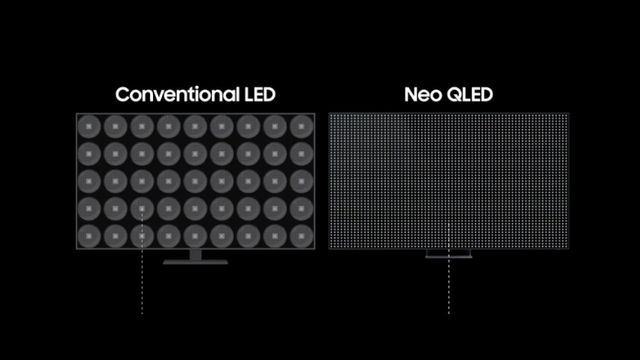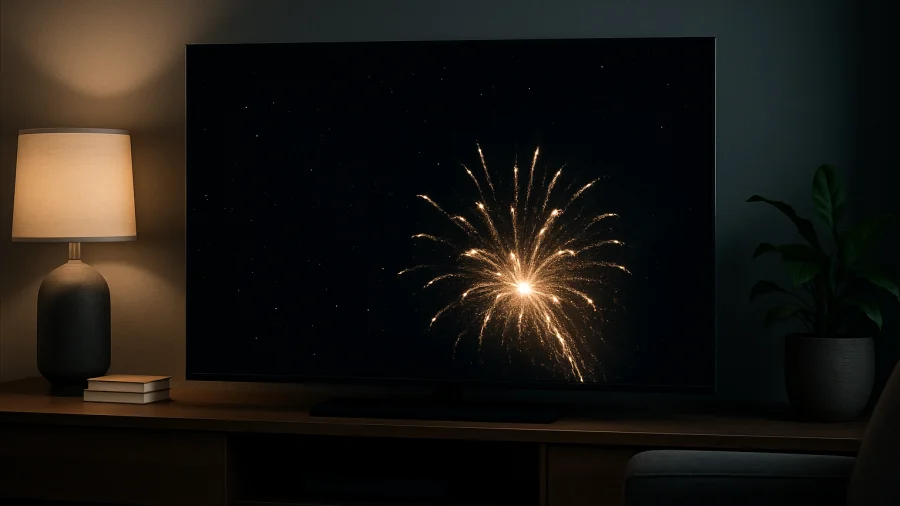Difference Between Direct Lit And Full Array

Imagine settling in for movie night. The lights dim, the popcorn's ready, and the screen flickers to life. But something's not quite right. The picture lacks depth, the blacks are a bit washed out, and you can't help but wonder if there's a better way to experience your favorite films.
This article delves into the often-overlooked technology behind your television screen: the backlighting. We'll break down the differences between two common types: direct-lit and full-array backlighting, revealing how each impacts picture quality and your overall viewing experience.
Understanding Backlighting Basics
Before we dive into the specifics, let's understand the basic principle of LCD (Liquid Crystal Display) televisions. LCDs don't produce light themselves. Instead, they rely on a light source, known as the backlight, positioned behind the screen to illuminate the pixels and create an image.
This backlighting is crucial for brightness, contrast, and overall picture quality. The way this light is distributed across the screen is what separates different types of backlighting technologies.
Direct-Lit Backlighting: Simplicity and Affordability
Direct-lit backlighting is a more basic approach. Here, LEDs are positioned directly behind the LCD panel, typically arranged around the edges or in a sparse grid.
While this method is cost-effective to manufacture, it often results in less uniform brightness across the screen. This can lead to noticeable "hot spots" or uneven lighting, especially in darker scenes.
The primary advantage of direct-lit TVs is their affordability. They are generally more budget-friendly, making them a popular choice for smaller screens or secondary viewing areas.
Full-Array Backlighting: Enhanced Contrast and Uniformity
Full-array backlighting takes a more sophisticated approach. In this setup, LEDs are spread evenly across the entire back panel of the TV. This provides more consistent and uniform illumination compared to direct-lit systems.
Furthermore, many full-array TVs feature local dimming. This technology allows the TV to dim specific zones of LEDs independently.
This targeted dimming creates deeper blacks and brighter whites, resulting in a significantly improved contrast ratio. According to rtings.com, TVs with full-array local dimming consistently score higher in contrast performance tests.
The downside? Full-array backlighting typically adds to the manufacturing cost, making these TVs pricier than their direct-lit counterparts. However, the investment often translates to a superior viewing experience, especially for those who value picture quality and contrast.
The Impact on Picture Quality
The type of backlighting significantly impacts several aspects of picture quality. Contrast, as mentioned earlier, is dramatically improved with full-array local dimming. This makes dark scenes richer and more detailed, while bright scenes pop with vibrancy.
Uniformity is another key area. Direct-lit TVs often struggle with uniformity, leading to noticeable variations in brightness across the screen. Full-array backlighting provides a more consistent and even picture, minimizing these distractions.
Viewing angles can also be affected. While not directly tied to the backlighting, the improved contrast and brightness of full-array TVs often result in better viewing experiences from wider angles.
Making the Right Choice
Choosing between direct-lit and full-array backlighting ultimately depends on your budget and viewing priorities. If you're looking for an affordable option for casual viewing, a direct-lit TV might suffice.
However, if you're a cinephile or a gamer who demands the best possible picture quality, especially in darker environments, a full-array TV with local dimming is definitely worth considering. Always read reviews and compare specifications before making your purchase.
Consider your viewing environment. A bright room might mask some of the differences between the two technologies, while a dimly lit room will showcase the benefits of full-array backlighting more prominently.
Ultimately, the best TV is the one that fits your needs and budget. Understanding the nuances of backlighting is a crucial step in making an informed decision and enhancing your viewing experience for years to come.





